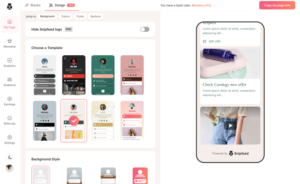With the onset of the Covid-19 pandemic in 2020, businesses worldwide were compelled to adopt digital technology and innovative ways to reach out and engage with customers. Like all other industries, the education sector in India was battered due to Covid-induced shutdowns, only to be revolutionised in a few weeks by its tech-powered counterpart — the edtech ecosystem.
In India, out of the 580 Mn or so young people, aged 5-24, about 250 Mn are enrolled in brick-and-mortar educational institutions, according to a recent census survey. This underlines the massive market opportunity for the edtech sector to tap into and expand. There is, however, just one glitch here — to reach that scale, online learning must be as inclusive and effective as offline institutions claim to be.
Before the Covid crisis upended the Indian economy and its sub-sectors, edtech was nowhere near the top five industry segments in terms of fundraising or deal volume. According to Inc42’s estimates, edtech was among the least-funded segments in 2019, scoring merely 46 deals.
Cut to 2021, and the scenario changed drastically. The edtech sector not only raised more than $4.7 Bn to emerge as the third most-funded sector but also saw three freshly minted unicorns — Eruditus, upGrad and Vedantu. But there’s more. At the beginning of 2022, another startup, LEAD, joined the ranks, taking the number of Indian edtech unicorns to six.
“These are exciting times for edtech. Companies in this space are the new blue-eyed boys of the Indian startup ecosystem. Covid has played its part in accelerating the growth of edtech startups, but the infrastructure being developed for online tutoring will provide further impetus in the next five to eight years,” said Sonia Kaul, VP of product marketing and digital enablement at Mumbai-based Karix, a customer engagement platform.
Today, Karix counts more than 15 edtech companies as its clients, including names such as Vedantu and WhiteHat Jr. According to Kaul — given the rapid development in the edtech space in the past couple of years — building strong brands and creating customer loyalty for the long term, will be the next level of challenges that must be taken into consideration.
This is no grand, overarching assumption. Edtech companies operate across segments (K-12 and beyond) and need to engage with all types of users and stakeholders — students, parents, teachers, and in some cases, even schools. Due to this diverse scenario and evolving user requirements, it is crucial for edtech players to understand how they should communicate with each segment for effective engagement.
Navigating Edtech’s Retention And Loyalty Maze
Engaging with students means brands have to focus on making learning enjoyable. To that end, gamification has seen massive adoption across the sector. Linking outcomes to rewards, introducing characters and stories to explain concepts and providing different learning formats are some of the key components that will improve student engagement and ensure better outcomes.
For LEAD, a recently minted unicorn, a multi-channel approach is required for accelerating the learning pace. The startup works with schools in Tier 2 and Tier 3 cities and aims to transform classroom learning into a multi-modal and multi-channel offering. Consequently, it helps teachers go beyond textbooks and use slides, videos, experiments and activities to make every concept easy to understand and remember. This is a holistic exercise as youngsters learn with their mind, body and senses.
“Another critical factor is the medium of delivery. Learning happens in classrooms through instruction, or there can be lessons on TV. But at home, it is done via a mobile app. On the student app, solutions are more personalised to help address individual learning gaps,” said Sumeet Mehta, cofounder and CEO of Mumbai-based LEAD.
All this is just one part of the puzzle, though. They serve to keep the platform and the content engaging and interesting. But it is equally important to keep the parents in the loop regarding their children’s learning growth. Getting the parents’ feedback on the platform’s performance and their kids’ journey should always be a priority.
“In a customer persona-obsessed marketing world, it is important to remember that both students and their parents are part of the conversion and the growth cycle. Hence, feedback from both is equally important when it comes to their experience with the brand, its teachers, online course selection, buying and delivery of that learning experience,” explained Kaul.
Anita Kishore, chief strategy officer at Bengaluru-based edtech giant BYJU’S, concurred. “BYJU’S takes feedback very seriously and ensures that they (students and parents) are engaged with our services. When you make your end-users feel valued, they are more likely to continue.”
Feedback remains a crucial tool, enabling brands to understand and bridge the gap between learning programmes and students’ takeaways from those. It also helps determine the quality of the learning experience, students’ growth outside those programmes and more. Until recently, email was the go-to channel for edtech firms in this regard, but gone are the days when this one-channel approach worked in their favour.
The spread and adoption of digitalisation mean edtech companies need to understand where their customers are and reach out to them via their preferred mode of communication. Using the right channel for engagement and conversion thus becomes critical.
Kishore told Inc42 that being a digital-first company, most of the employees at BYJU’S connect with customers on video calls or through email. This allows the brand to retain the end-users and increase repeat business. “We have witnessed a year-on-year renewal rate of over 86% — a testament to our value creation,” she added.
Iterating the same, Kaul said, “If users prefer a specific channel, one should build and deliver powerful content there. If a particular concept works well, build rapidly and test for other content samples in the same. For instance, quiz and other gamification flows work well for both students and parents when we need to ascertain the aptitude and interests of both.
“We are working with edtech customers on various use cases to enhance campaign performance and build higher engagement via WhatsApp conversations. We have seen brands increase their app installations via our marketing automation platform and retarget customers with personalised nudges on channels that are interactive like WhatsApp,” she added.
In its three-year journey with edtech companies across geographies, Karix has developed insightful and targeted solutions that help platforms increase their average retention rates by 3-5% month on month and reduce drop-offs by an average of 2-3% MoM.
Onwards And Upwards: Edtech’s Growth Trajectory In India
Although the sector has grown phenomenally in the past couple of years, it has its own set of challenges, including customer acquisition cost (CAC) and capacity-building requirements in terms of robust and scalable infrastructure.
According to an industry insider, for an Indian edtech company operating in the K-12 space, the CAC amounts to $137-821 per student.
In a Press interview, Manan Khurma, founder and CEO of Bengaluru-based Cuemath, said, “Many companies are struggling with CAC in India because they all use a similar approach (to reach out to customers). Common advertising channels like Facebook are now starting to saturate because everyone uses them, with the same terminology and promises, and parents do not know how to differentiate between various offerings. So CAC will continue to rise in India.”
In spite of these pitfalls, Indian players have a vastly untapped market in the hinterland, and industry giants like BYJU’S are keen to explore the potential of the domestic market instead of entering the global arena.
“For BYJU’S, India is still the largest market and our biggest focal point. With more than 250 Mn school students, the country has the world’s largest school-going population, and we have only scratched the surface of our target market here,” said Kishore.
Asked about a demographic breakdown on these platforms and BYJU’S focus area, she added, “We have students from 1,700 cities and towns. More than 65% of our students are from outside the top 10 Indian cities. We are also going deeper into regional markets, beyond the Tier 1 cities, with learning programmes in various vernacular languages.”
Similarly, LEAD, which has partnered with more than 2K schools across Tier 2, Tier 3 and Tier 4 locations, focusses on bridging the learning gaps in these locations. It aims to meet this goal by bringing in global best practices, from upskilling teachers to designing the best curricula to the most effective pedagogy/learning practices, explained Mehta.
Talking about the communication trends in the edtech space and their business impact, Kaul of Karix said, “Considering the market scenario we are in, it is important for edtech companies to focus on new user segments. This can be done through proactive/predictive campaigns and by leveraging tools such as LiveAgent for query solving as Gen Z loves chatting.”
As businesses worldwide are evolving fast to cope with unprecedented circumstances, edtech brands need to adapt to new-age technology trends like martech and AI assistance for expansion and scaling up. It is essential for companies to understand the emerging consumption patterns and innovate in sync to reach their target audience and accelerate their growth.










